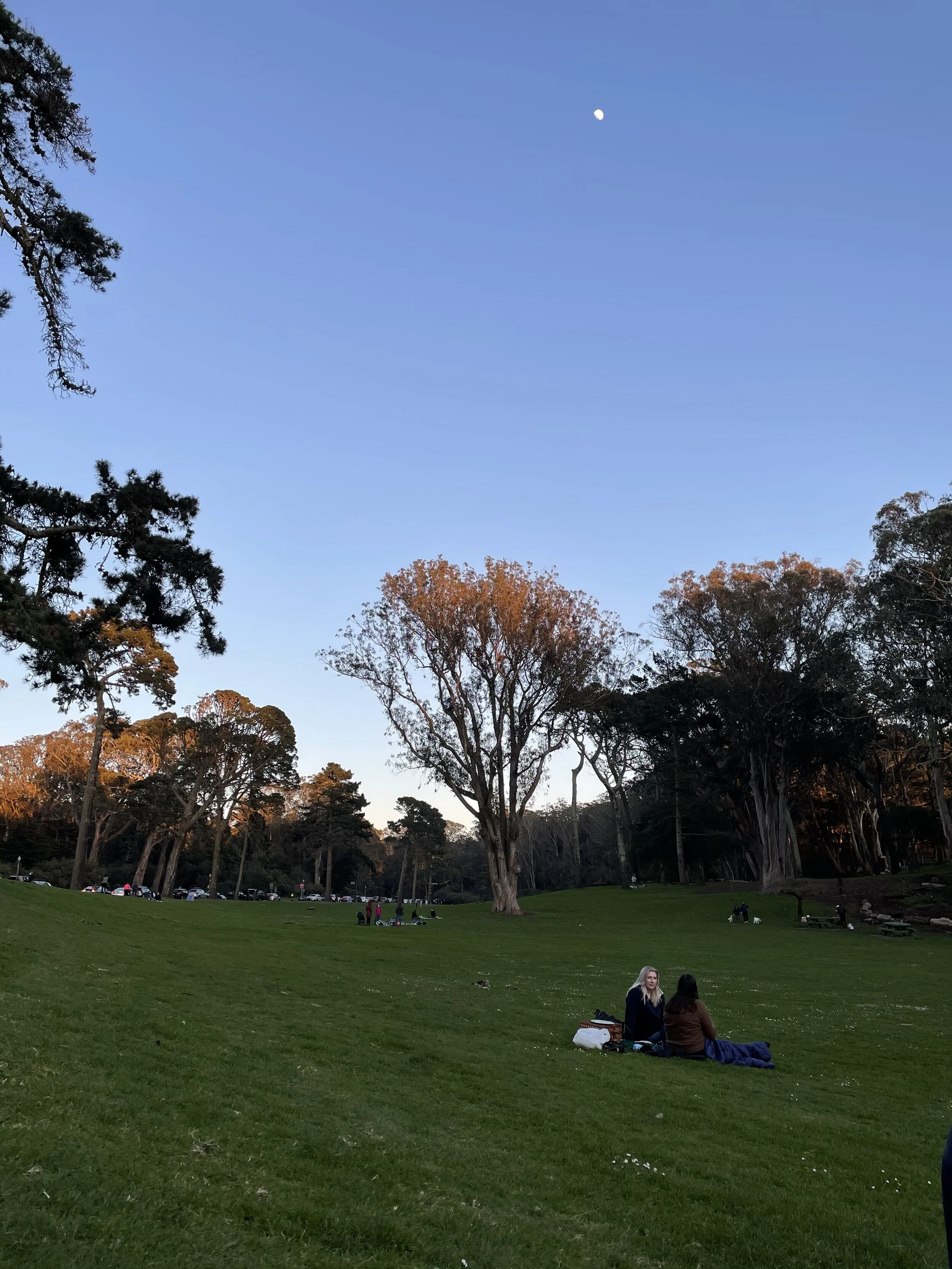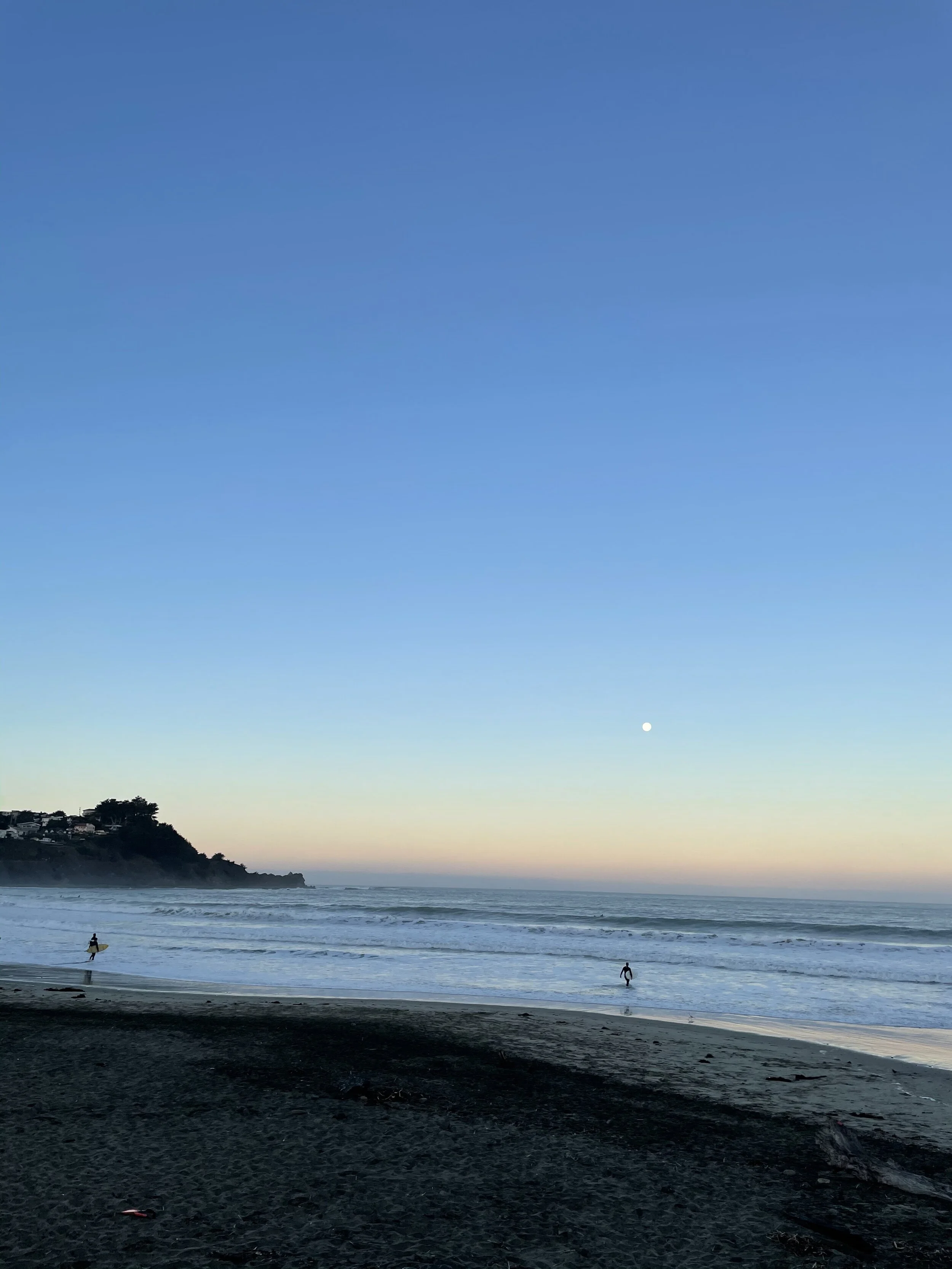We (Mostly) See Reality
1. The Moon
Have you ever tried to take a photo of the moon? It’s a disheartening thing to do. In the photos you take, it looks puny, nothing at all like the massive looming, gloaming thing we see with our eyes.
A photo I took last weekend at the park. Look at that moon. Pathetic!
2. Photographs are close(r) to “Reality”
Let’s make a couple of assumptions:
In this argument, when I talk about reality, I’m talking about the physical world, nothing deeper
There’s an objective physical reality
How does a camera work?
Light bounces off of objects in the world
Enters the camera
Strikes the film in patterns that are roughly analogous to the patterns of the actual objects in the world
We develop the film so that we can see those patterns
How does our vision work?
Light bounces off of objects in the world
Enters our eyeballs
Strikes our retinas in patterns that are roughly analogous to the patterns of the actual objects in the world
Information from the retinas is routed to the brain
Our brain interprets this information and constructs an image in our mind
It’s important here not to understate the importance of step 5 in our vision. It’s a really remarkable and mysterious thing that our brains do when they turn signals into pictures in our mind’s eye. It’s also not a simple process in the least. People who are for some reason blind for their first few years of life can never learn how to see, even if their eyes are working and signals are being routed to the visual cortex. The images that we do see in our mind are shaped by our culture and personal experiences, the classic example is that different cultures have different words for colors, and this, in turn, affects the colors they see, and the gradations between colors that they perceive. My point is: to get from objects in the world → images in our minds, a tremendous amount of interpretive work is done by our brains.
[ Maybe you want to argue “well, once you develop a photograph, it then has to enter your brain when you see it, so it’s really no different than just looking at the world” -- I think this is not quite the case. Some crucial differences between photographs and images in our mind include the fact that we cannot measure the images in our visual field. We can’t objectively say “this building takes up 75% of my visual field, or measures 10 inches tall in my mind.” Whereas these things are very easy to say about photographs. ]
To wrap this up: photographs are better at representing physical reality than our brains are, because they, for the most part, present us with a picture that has been significantly less constructed by the mind. They skip steps 4 and 5 in the model of human vision and present us with the results of step 3. By comparing photographs to what we see in our minds, we can better understand the sort of work being done in steps 4 and 5 of human vision.
3. Photographs are surprisingly familiar
Given the amount of interpretation and construction that our brains undertake, it should be surprising to us how similar photos are to the images in our minds.
There was an article in the Atlantic a couple of years ago about the cognitive scientist Donald Hoffman, and his argument that our perception of reality is not necessarily accurate. His work is premised on game theory explanations showing that the most realistic depiction of reality is often not the most successful strategy. https://www.theatlantic.com/science/archive/2016/04/the-illusion-of-reality/479559/
I have some gripes about this approach (mostly, I think the cost of an organism evolving a system that represents reality inaccurately but successfully hasn’t been fully accounted for), but his core point stands: We have not necessarily evolved to perceive reality accurately.
With that being the case, it’s somewhat remarkable that photographs look as familiar as they do! It’s evidence that our brain represents reality pretty accurately.
4. What does the moon mean?
I think that the fact that the moon looks so different in photographs than with our eyes is evidence that our brain doesn’t actually represent it accurately. It is one of the few exceptions to our generally accurate visual system! And there are plausible reasons why this would be the case! The moon is one of the few things we regularly see but can never interact with or get closer -- it’s very hard to verify the relative size of it, and hard to think of any evolutionary pressures that would encourage accurate representation of it in our minds. What possible advantage would early humans who saw the moon as smaller (more accurate) possibly have?
When we take photos of the moon, and it looks tiny and unimpressive, it’s the example that proves the rule, reminding us how similar photos and vision typically are. It’s also exciting, because it should make us wonder — what other parts of our lived world are constructed inaccurately?
Look at that lovely little moon


